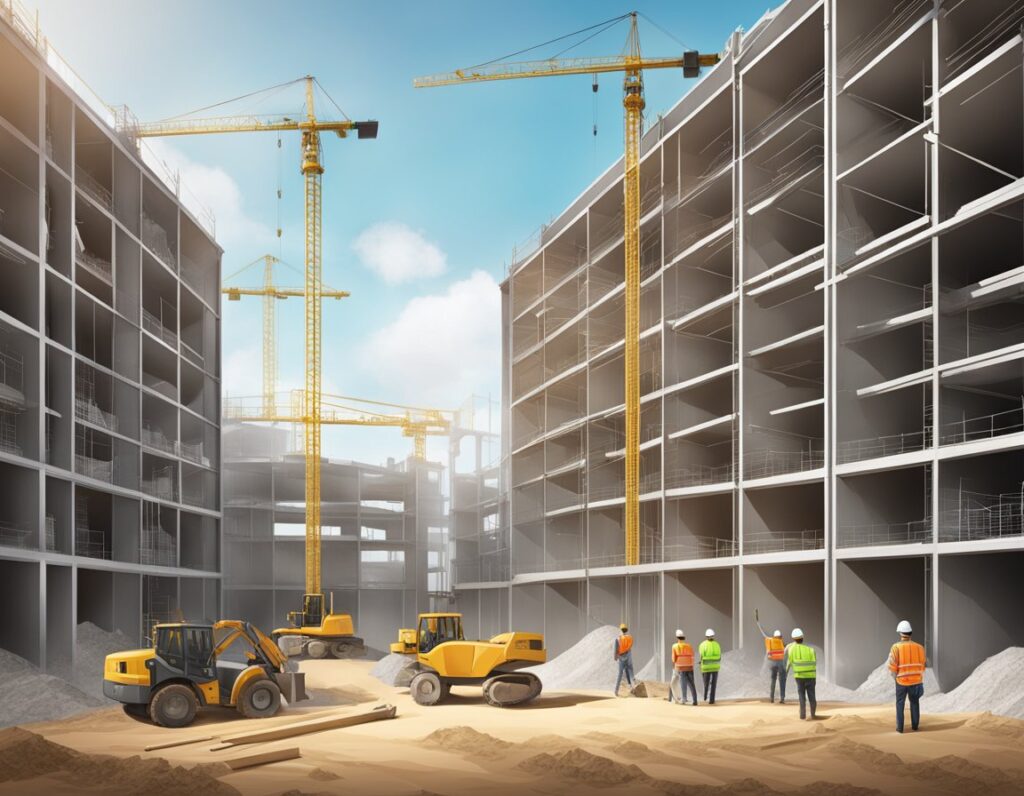Detailed drawings are a cornerstone of successful construction project management in the UK.
By providing precise and comprehensive visual representations, these drawings delineate every aspect of the project. This includes the geometric form of individual components to the broader scope of structural requirements.
This level of detail is vital for architects, engineers, and builders to avoid misunderstandings and ensure accuracy in execution.
By facilitating clear communication amongst the stakeholders and providing exact specifications, these drawings become instrumental in minimising room for error and the associated financial repercussions.
Employing detailed construction drawings effectively paves the way for cost savings throughout the project lifecycle.
As a tool for meticulous planning, they enable the foresight necessary to pinpoint potential issues before they escalate on-site, thereby preventing costly delays and material wastage.
Moreover, comprehensive plans enhance the stakeholder’s ability to tender for materials and labour with finer precision. This maximises resource allocation and potentially reduces overheads.
With the ever-increasing financial pressures in today’s construction industry, the role of detail in drawings can be the key to maintaining profitability.
Key Takeaways
- Detailed drawings facilitate precise project execution and cost efficiency.
- Anticipating and mitigating risks through plans can prevent expensive errors.
- Strategic use of detailed drawings aids in resource management and allows for accurate budgeting.
Significance of Detailed Drawings in Cost Reduction
In construction projects, detailed drawings have a pivotal role in managing your budget efficiently. They serve as a roadmap, reducing financial uncertainties by providing precise information for all parties involved.
Accuracy and Clarity
With detailed drawings, you can achieve a high level of accuracy and clarity in the construction process.
They ensure that every dimension and specification is clearly communicated, which results in an accurate understanding of the scope and, therefore, cost estimation.
Accurate shop drawings avoid the risk of over-ordering materials or underestimating labour hours, which can both inflate the project costs.
Error Prevention
Error prevention is another critical cost-saving aspect.
Construction shop drawings are akin to a detailed checklist that helps you identify potential issues before they become costly errors.
For instance, identifying conflicts in design early can prevent the need for rework, which is often expensive and time-consuming.
Resource Optimisation
Effective resource optimisation leads to significant cost savings.
By having detailed drawings, you can plan for the exact quantities of materials needed, reducing waste.
Furthermore, you can allocate labour more efficiently, avoiding the additional costs associated with idle workers or overtime caused by miscommunication or last-minute changes.
Stakeholder Communication
Lastly, Stakeholder communication is enhanced through detailed drawings.
Providing a clear representation of the project helps align the expectations of all parties and facilitates smoother project execution.
For subcontractors and builders, having these detailed drawings allows for more accurate and competitive quotations, which ultimately benefits your project’s budget.
Strategies for Effective Implementation

To reduce costs in construction projects, precise drawings and their proper management play a critical role. Here’s how you can implement strategies to leverage detailed drawings for financial efficiency.
Utilising Advanced Technologies
Building Information Modelling (BIM): By adopting BIM, you create detailed digital representations of the physical and functional characteristics of a building.
This technology helps in visualising the final product, thus reducing the need for rework, which can be costly.
- Software Tools: Use software that can handle complex data and allow for the integration of updates across all project levels. This ensures that everyone is working from the most current set of drawings.
Continuous Training and Development
Invest in Staff: Ensure that your team is well-versed with the latest technology and best practices.
Regular training sessions can help in understanding the nuances of detailed construction drawings.
- Workshops and Seminars: These can provide hands-on experience and knowledge about interpreting and managing construction drawings efficiently.
Streamlined Review Processes
Revision Control Process: Establish a clear protocol for handling revisions.
- Marking Revisions: Use a consistent method for marking changes to avoid confusion.
- Updating Drawing Sets: Ensure updated versions are distributed promptly to all stakeholders.
Communication: Maintain an open line of communication across departments to keep everyone informed of any changes.
Use tools that allow for real-time updates and feedback.